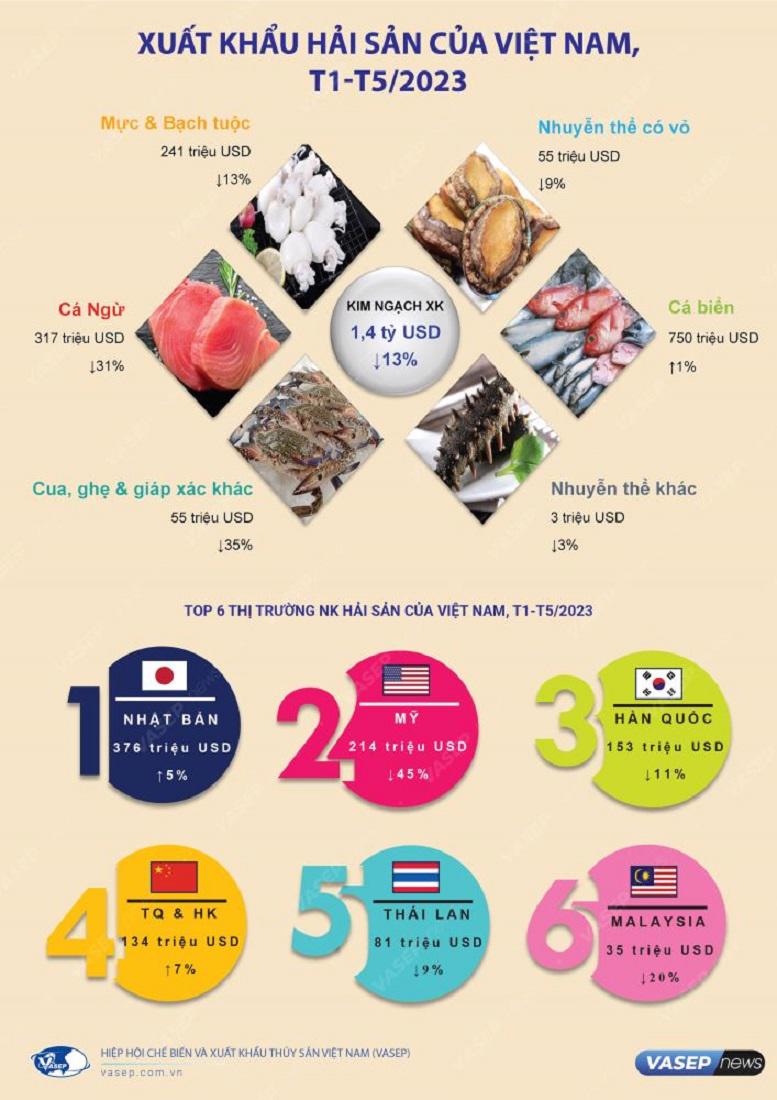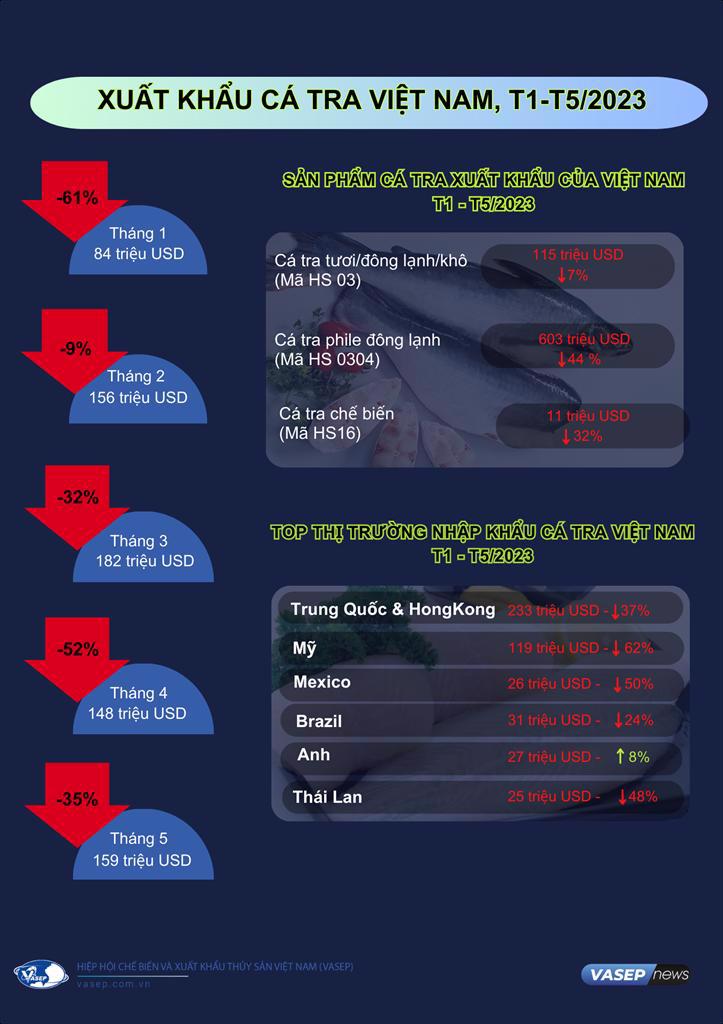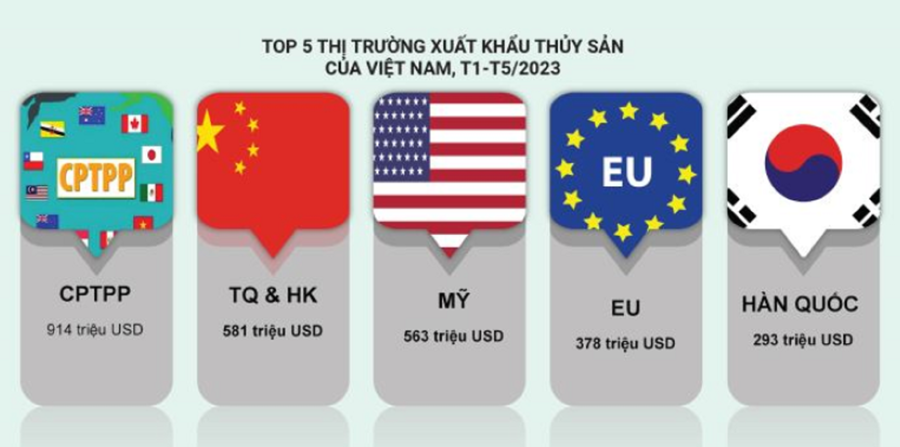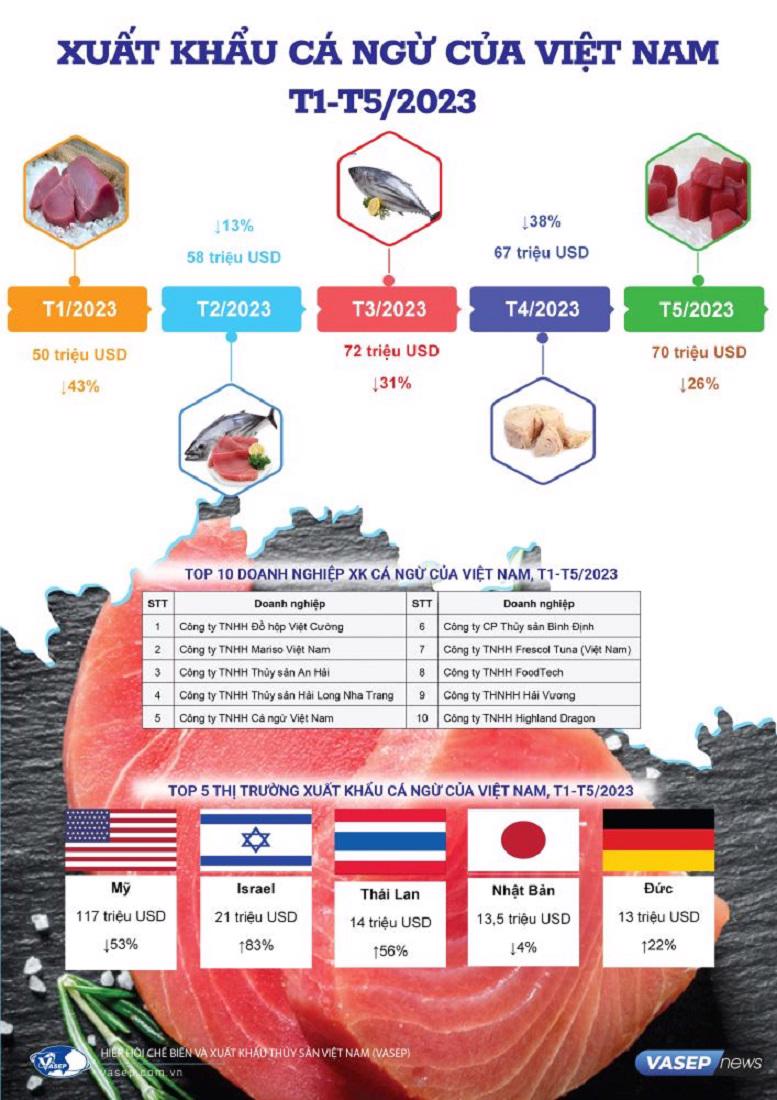[ad_1]
Seafood exports in the first five months of 2023 were 29% lower than in the same period of 2022, according to a recent report by the Vietnam Association of Seafood Exporters and Producers (VASEP).
However, in May 2023 alone, seafood export sales topped US$808 million, the highest since the start of the year. Notably, the decline in key commodities has gradually moderated over the same period. Exports to the US, EU, China, Japan and South Korea markets all achieved their highest sales since the beginning of the year.

In general, exports of the main seafood products fell by 10-20% in the first five months of 2023 compared to the same period last year. Pangasius fell the most with sales of just $730 million, down 40%; Shrimp Down 34%; tuna down 31%; Squid down 12%. However, there are some species of marine fish that have seen positive growth, such as B. Anchovies, which increased by 53%; Scad rose 14%; Goldfish up 20%…

According to VASEP, there are three main reasons Vietnam’s seafood exports have fallen by 30% since the beginning of this year compared to the same period last year.
The first, Inflation and inventories rose, reducing the demand for consumption and imports in the markets
Monday, intense competition with other producing countries in terms of supply and price, typically Ecuador, India…
Tuesdaythe health and stamina of farmers, fishermen and seafood companies have been weakened due to increased production costs, falling selling prices, slow consumption, increased inventories, depleted capital and difficulties in accessing credit to sustain production – export.

The supply-demand fluctuations are due to war and inflation, so far there have been no positive signals, so the market forecast also lacks basis and certainty.
However, according to many seafood companies, the seafood consumption market is unlikely to recover from now to year-end, or if it does, it will be slow to recover.
In the first five months of 2023, seafood exports to the US and EU fell by 48% and 33% respectively, to China by almost 30%, to Korea by 21% and to Japan by 8% compared to the same period last year. return. period of the previous year”.
More specifically, VASEP said that in some key markets like the US and EU, along with expectations of more positive economic conditions and inflation, the big problem is resolving inventories. In 2022, these markets imported massively and before they could consume, they immediately experienced an inflationary shock, so there was a lot of inventory and the selling price was low.
Also, the hurricane of cheap goods from other countries like Ecuador and India has almost overwhelmed the Vietnamese products in those countries, especially shrimp – our main product. Therefore, the market signal is not very positive in the short term.
The Japanese and Korean markets also saw demand fall due to inflation, but not as much as the two markets mentioned above. Many companies still see an optimistic bright spot in these two markets, meaning that Vietnam’s leading position in value-added goods is not competitive with other countries. As a result, as long as inflation gradually stabilises, exports to these two markets will recover more quickly, balancing the rest of the markets.
With China, the recovery of that market after the country’s post-Covid reopening has still been sluggish, with even Vietnam’s seafood exports to that country falling by almost 30%.
“The reality is not as expected because after three years of strict anti-Covid trade control, the Chinese economy has clearly been hit quite hard, people’s incomes have fallen, the unemployment rate has risen. Therefore, actual domestic demand cannot recover, especially in the short term.” “Considering that China needs to focus on restoring its seafood production and processing industry,” VASEP assessed.

However, it is possible that this market will perform better in the second half of the year than at the beginning of the year, when the Chinese have better adapted to the new context in the areas of tourism, restaurants, hotels and consumption. will gradually recover.
Facing the current difficulties and challenges, the fish and seafood companies have decided that now is the time to review and review production costs to keep the number of employees and workers’ incomes stable. Don’t expand investments. This is also the time when companies spend time looking for new products to cater to the post-Covid market and high inflation.
According to VASEP, the top concerns of seafood companies today are high input costs, low selling prices, and abandonment of ponds by farmers and farms, which will result in raw materials being unavailable for import processing as the market recovers, and again once Vietnamese seafood lost its position to other countries. Therefore, more than ever, the entire seafood industry must work together across all levels, sectors and components of the supply chain to find solutions to deal with this difficult period of 2023-2024,” emphasizes the VASEP report.
[ad_2]
Source link

